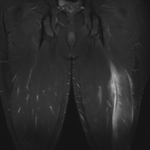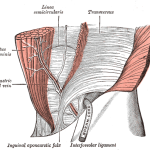Introduction
We all know that hamstring strains are common injuries within sports that involve sprinting and jumping. In fact, they represent a significant proportion of muscle injuries: 50% in sprinting, 40% in soccer (Yeung et al, 2009) and 14% in Australian Rules football (Gabbe et al, 2006). They have been shown to be more common than any other muscle injuries and players are 2.5 times more likely to suffer a hamstring strain compared to a strain of their quadriceps (Woods et al, 2004). This is significant as Small et al (2010) found that soccer players miss on average 3 competitive matches per hamstring injury. Consider the huge impact on the success of sporting teams when high profile players are injured!
Therefore, it is essential that sports physiotherapists rehabilitate players effectively and comprehensively. This is particularly given the high re-injury rate, of approximately 12% (Woods et al, 2004), which has potentially been due to inadequate rehabilitation and premature return to sport (Heiderscheit et al, 2010). Thus, establishing appropriate return to play timeframes can be a challenging task for the sports physiotherapist. Fortunately, there is new research coming to light that may assist physiotherapists in providing a realistic prognosis following a hamstring strain.
New Research on Prognosis Following Hamstring Strain
A great new article from Askling et al (2012) considers the impact of mechanism of injury on hamstring injury prognosis. They compare the differences between high speed running and stretching injuries to the hamstrings, and how this is likely to affect the physiotherapy treatment and the athlete’s prognosis.
High Speed Running Injuries: Implications for Rehabilitation and Prognosis
Commonly, hamstrings are injured during sprinting and the lesions are often located in the proximal musculotendinous junction of the biceps femoris. Initially there can be a significant functional impairment, but generally these types of injuries require a shorter period of rehabilitation than the stretching type.
Frequently athletes will report a considerable improvement in symptoms within the first 4-6 days after the initial injury. However it should be remembered that despite improvements in pain, strength and flexibility the healing process will still be in its early stages so the rehabilitation should reflect this. Pain-free jogging can be allowed in the early stages but more intense high speed eccentric training should perhaps be introduced later in the rehabilitation process once the healing process has progressed.
Stretching Type Injuries: Implications for Rehabilitation and Prognosis
In contrast, these injuries tend to occur with movements that cause excessive lengthening of the hamstrings such as high kicking or slide tackling. The lesions have a tendency to be located close to the ischial tuberosity and usually involve the semimembranosus tendon. Unfortunately, it has been suggested that the closer the lesion is to the ischial tuberosity the longer the rehabilitation process so these injuries can have a poorer prognosis.
Therefore, in the presence of these injuries it is essential to inform both the coach and athlete that despite the milder initial symptoms the rehabilitation period may be prolonged. This will assist in preventing excessive frustration during rehabilitation period. The athlete’s rehabilitation and physiotherapy treatment can include demanding exercises from the early stages as long as they do not provoke any symptoms. Therefore passive stretching and heavy load exercises may need to be avoided initially as they appear to provoke pain in athletes who have sustained stretching type injuries.
Limitations of this Research
Much of the information discussed above is based on prior knowledge and previous research. However, it should be noted that some of the “data” used to supports the claims within this article is from an ongoing study. Therefore, definitive conclusions regarding the effectiveness of the different rehabilitation protocols is not yet fully available
Clinical Implications of this Research
Ultimately this research can assist therapists in designing appropriate rehabilitation programmes dependant on the type of injury sustained, and inform both athletes and coaches on the potential length of rehabilitation required to return to play. It should be remembered:
- High-speed running injuries, regularly proximal biceps femoris, tend to recover quicker
- Stretching injuries, where lesions are near the ischial tuberosity, require longer rehabilitation
- Passive stretching and high load exercises may be pain provoking in stretching type injuries, and should be initially avoided
- High speed eccentric training essential during the rehabilitation of running injuries, but should be included in the later stages of rehabilitation
- Sports physiotherapists need to ensure a complete absence of any symptoms on comprehensive hamstring testing prior to return to play
References
Askling, C.M, Malliaropoulos, N & Karlsson, J (2012) High-speed running type or stretching-type of hamstring injuries makes a difference to treatment and prognosis, British Journal of Sports Medicine, vol 46(2), pp86-87
Gabbe, B.J, Bennell, K.L, Finch, C.F, Wajswelner, H & Orchard, J.W (2006) Predictors of hamstring injury in the elite level of Australian football, Scandinavian Journal of Medicine and Science in Sports, vol 16, pp7-13
Heiderscheit, B.C, Sherry, M.A, Silder, A, Chumanov, E.S & Thelen, D.G (2010) Hamstring strain injuries: recommendations for diagnosis, rehabilitation and injury prevention, Journal of Orthopaedic & Sports Physical Therapy, vol 40(2), pp67-81
Small, K, McNaughton, L, Greig, M & Lovell, R (2010) The effects of multidirectional soccer-specific fatigue on markers of hamstring injury risk, Journal of Science & Medicine in Sport, vol 35, pp120-125
Woods, C, Hawkins, R.D, Maltby, s, Hulse, M, Thomas, A & Hodson, A (2004) The Football Association medical research programme: an audit of injuries in professional football – analysis of hamstring injuries, British Journal of Sports Medicine, vol 38, pp36-41
Yeung, S.S, Suen, A.M.Y & Yeung, E.W (2009) A prospective cohort study of hamstring injuries in competitive sprinters: preseason muscle imbalance as a possible risk factor, British Journal of Sports Medicine, vol 43, pp589-594
About the Author
This was a great guest post by UK Physiotherapist Laura Chimimba. Laura graduated from Glasgow Caledonian University in 2006, and since graduation has had the opportunity to work at various levels of football. She has been involved with the treatment and rehabilitation of players from amateur, professional youth academy and elite level women/girls players. She is currently the Head Physiotherapist at Stenhousemuir FC. In addition to her sports coverage, Laura also works within the NHS and in private practice at Move Well Physiotherapy near Falkirk. This allows her to work closely with a variety of Orthopaedic and Sports Medicine Specialists. Furthermore, Laura has continued to further her education and has recently began a MSc in Sport and Exercise Medicine. Fortunately for her patients, and you as the reader, she continually strives to enhance her clinical skills and stay up to date with current evidence based practice.
Photo Credit: seantoyer
Related Posts
Comments
Trackbacks
-
[…] 3. How Mechanism of Injury Affects Prognosis Following Hamstring Strain by The Sports Physiotherapist – Not all hamstring injuries are the same! This article talks about the hamstring and how different mechanisms of injury will call for different modes of rehabilitation and returns to activity. […]











Unfortunately this latest research told us nothing new….definitely a great article for the new graduates, but It is fair to assume that research of past and anecdotal evidence already tells us that lateral hamstring tears heal quicker than medial tears, stretching a muscle too early when its acutely torn is bad, a tear near the bone is worse than the muscle belly etc. Well the positive is that we have great current research to back it up. Still love this website to bits….one of the greatest assets to (sports) e-health